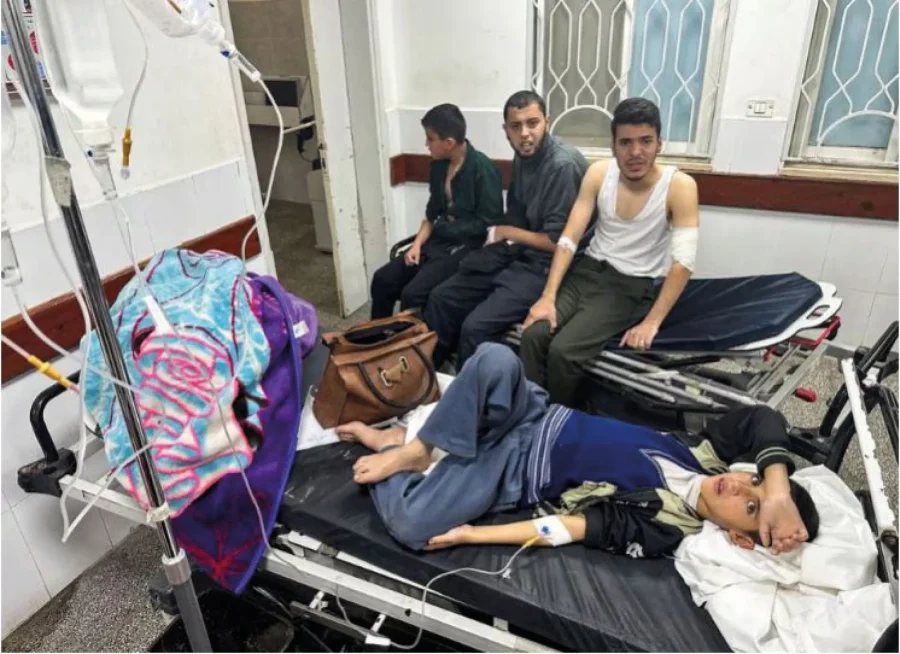The United Nation humanitarian office said on Wednesday that Gaza faced a public health disaster due to the collapse of its health system and the spread of disease amid an offensive by Israel that has hit hospitals and displaced hundreds of thousands of people.
The head of the UN agency for Palestinian refugees, meanwhile, warned that the people of Gaza were “running out of time and options”.
The UN and aid groups have sounded the alarm about the spread of infectious disease in Gaza, where the internal displacement of 85 per cent of the population has caused overcrowding in shelters and other temporary living facilities.
“We all know that the health care system is or has collapsed,” said Lynn Hastings, the UN Hu-manitarian Coordinator for the Occupied Palestinian Territory.
“We’ve got a textbook formula for epidemics and a public health disaster.” WHO has reported a sharp rise in acute respiratory infections, diarrhoea, lice, scabies and other fast-spreading diseases.
Hastings said people in Gaza had to line up for hours just to access a toilet. “You can imagine what the sanitation conditions are like,” she said.
Hasting said that almost half of Gaza’s population of 2.3 million was now in Rafah in the southern tip of the enclave to escape Israeli bombardment. “This is leading to nothing but a health crisis,” she said.
UNRWA chief Philippe Lazzarini told the Global Refugee Forum in Geneva on Wednesday that they face bombardment, deprivation and “dis-ease in an ever-shrinking space”.
People in the Palestinian territory were “facing the darkest chapter of their history since 1948, and it has been a painful history”, he said. “We are very far from an adequate humanitarian response,” Lazzarini said.
When aid was delivered, it was often not more than a can of tuna or beans and one bottle of water for a large family to share, he added. He described seeing people halting an aid truck and in desperation and swallowing down the food found inside where they stood in the street.
“The people of Gaza are now crammed into less than one-third of the original territory near the Egyptian border, he added, hinting that the dire situation might soon spark an exodus.
“It is unrealistic to think that people will remain resilient in the face of unlivable conditions of such magnitude, especially when the border is so close,” he said.
The city of Rafah on the Egyptian border, the only crossing where aid is entering Gaza, has seen its population explode from 280,000 to more than a million, Lazzarini said.
And while most aid delivery in Gaza depends on UNRWA, he warned the agency’s capacities were “on the verge of collapse”.
Addressing journalists at the same event, UN refugee chief Filippo Grandi also warned of the danger of large population movements out of Gaza. Any such exodus “would be extremely destabilising for Egypt, for the Sinai region, and it would make a problematic Palestinian problem more difficult”, he said.
It is vital that any evacuation of people out of the devastated territory “is not forced”, he said. “Since these people are under bombardment and in a very difficult situation, it must be said that a ceasefire is the only way out of this impasse.”—Agencies










